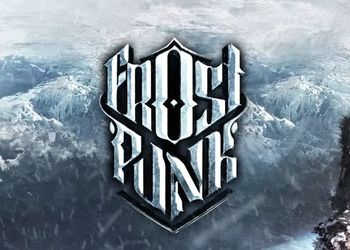Seed is the number that is used by the game engine when generating the game world. Each game world has its own static seed value, which ensures consistent and correct level generation, as this process is pseudo-random. Prior to Beta 1.3, a seed was automatically assigned to each world. After this update, it became possible for the user to enter the seed value, which can consist of an unlimited number of digits. The number in the input field is converted as needed using a Java function. String.hashCode (). For example, the “abc” seed is converted to a numeric value of 97 × 31² + 98 × 31 + 99 = 96354.
Contrary to popular belief, using the name of a biome (i.e. tundra, desert, forest, etc.) as a seed does not always lead to the creation of the specified biome as prevailing in the game world. Similarly, this does not mean that the player will end up in the specified biome after spawning. Sid determines the algorithm for creating the entire game world, not just the area around the spawn point.
If you use the same seed value to generate two cards, it will create two completely identical game worlds, even on different computers. Thus, players can exchange seeds to create the same worlds on their own. A player’s spawn point is usually always located in one place, but this also depends on the computer, mods and version of the game.
If the seed field is left blank, the game uses the system time (clock) as the seed. If you leave the seed field empty all the time, this will not lead to the creation of the same worlds, since the system time is constantly changing.
The seed value only affects the structure of the game world, but does not change the behavior of objects in it. For example, there is no seed value that will replace all the water on the map with lava, or make the entire game map desert.
It is worth noting, however, that writing words or phrases in the seed field limits the number of possible worlds that can be created, due to the database limitation of the String.hashCode () function. You can only write 4 billion letters in the seed box. By using numbers as a seed, you will have access to the creation of the maximum number of game worlds, which is approximately equal to 281 trillion. However, even if you create 1000 worlds every day with different seed values, it will take you 10,960 years to reach the last possible value..
One of the examples (I won’t post a screen, but there is almost a spawner on the surface)
Top line: Standard title or Quesadila
Bottom line: Quesadila
Types of railway tracks
Simple single lane tracks
Single-lane path example.
The simplest type of railroad: we install the rails one after the other and limit the ends of the tracks with opaque blocks.
You can accelerate the trolley with a trolley with an engine, or make the track sloped so that the trolley can accelerate when moving down the mountain. Unfortunately, both options are not very good: the trolley with the engine has a lower speed than the player, and it is quite difficult to keep the necessary slope of the tracks all the time.
Efficiency: minimum.
Disadvantages: Difficulty overclocking the trolley.
Simple two-lane paths
Two-lane paths.
The second simplest type of railway. It is being built similarly to single-lane tracks, but it will take at least 2 times more rail to create a similar type of railway. The ends of the tracks must be connected to each other so that the trolley can travel endlessly along the tracks in one direction.
A trolley with an engine is best for this type of railway – it can move until it runs out of fuel.
Efficiency: Average (uses one coal per trip).
Disadvantages: with each new activation, the trolley with the engine goes in the opposite direction to the one in which it went last time. This creates some difficulty (assuming the motorized minecarts are pushing other minecarts).
Looped paths
Looped paths.
They are built as single-lane paths, but the ends of these very paths should form a loop so that the end of the loop looks towards the opposite end of the paths. When creating such paths, do not forget about the “south-west rule”: the trolley always tends to turn either to the south or to the west.
A trolley with a stove is best suited for overclocking on such tracks..
Efficiency: Average (uses one coal per trip).
Disadvantages: Due to the “southwest rule” it can be difficult to create the correct loops.
Electric paths
Electric rails activated by pressure rails
At the moment, the simplest type of track is that the trolley can move along them indefinitely, without fuel consumption. However, such rails are quite expensive to build..
You will need simple rails, electric rails, and pressure rails or redstone torches.
Just start working your way out of normal rails, but insert electric rails every 14 blocks (electric rails give the minecart enough power to drive 64 blocks, but to keep the minecart from losing speed, put them in every 14 blocks). If you want minecarts with chests or simple minecarts to move freely along these rails, place electric rails every 7 blocks. Please note that climbing uphill is more difficult work, therefore more energy must be transferred to the cart before lifting. To do this, you can install several electric rails in a row.
To activate the electric rails (in the off state they will simply stop the minecart), you need to install one redstone torch next to them. Instead of a redstone torch, you can install pressure rails next to the electric rails (in this case, they will be activated only when a minecar is driving along them), but for this you will have to use more resources.
Stop
Using the property of electric rails to stop or accelerate the trolley, you can create convenient stops – when the trolley arrives at a stop, it will stop, but as soon as you press the button, it will go further. To do this, try to repeat the construction shown in the screenshot: dig a hole five blocks long, one wide and one high. Install electric rails on the first block in the pit, simple rails on the next two blocks, put pressure rails on the fourth and block, and electric again on the fifth. Install the pressure rails on another block immediately. Next to the first block, dig two blocks to the side and run the redstone wire in the hole. Place a stone block (or any other block) above the second block (relative to the block with rails) and attach a button to it. The stop is ready.
Efficiency: 100% (violates the first law of thermodynamics). The trolley on such routes is able to travel endlessly, without fuel consumption.
Disadvantages: It takes a lot of redstone and gold to build long paths.
Accelerated paths
These are ordinary tracks, but the trolley is accelerated using an accelerator. This type of track was often used prior to Update 1.5, which introduced electrical tracks. Electric paths are more efficient, but the accelerator can still be used in the early stages of the game, as long as the player does not have enough gold to build the latter.
Efficiency: 100%. After acceleration, the trolley can go endlessly.
Disadvantages: The accelerator is a rather bulky design. The minecart can stop if something prevents it from going (for example, a mob on the tracks).
After update 1.6 this method does not work!
Path modifications
Railway branches
Rails, under the influence of redstone or mechanisms, can change their direction. This can be used to create common railroad junctions as well as to create complex redstone circuits that control a railroad..
When switching rails, the “south-west rule” applies to them.
Dynamic lighting
With the help of pressure rails and redstone torches, it is possible to create dynamic track lighting. This requires the installation of pressure rails, inverters and redstone torches..
Features of the construction of the rail
Trolleys.
The trolleys can be installed anywhere, but only on the rails they will move freely, otherwise they will simply freeze until they are pushed. There are only 3 types of minecarts:
Passenger
The player can sit in them, they can be pushed or accelerated with the help of electric rails or minecarts with an engine..
Freight
Serves to transport things.
Carts with engine
Trolley pushing other trolleys. Electric rails have no effect on it..
Slides
When descending a hill, a normal minecar is accelerated, but a minecar with an engine does not change speed.
To lift the cart uphill, you must give it enough energy. The kiln trolley can lift several other trolleys up the hill if it has time to accelerate horizontally. Electric rails can be installed on the uphill as needed.
Path damage
Water, lava and explosions destroy the rails. To prevent this from happening, you need to follow several rules:
Isolate the rails from water and lava as much as possible.
If the rails go below the nearest water source, then be prepared for the fact that they may be flooded in the event of an attack by griefers, an explosion of creepers, or accidentally undermining the wall of a water tank. The water will simply wash away the rails, the lava will also burn them.
Beware of creepers.
Creepers can explode, demolishing not only the ground, but also the rails near the explosion. Therefore, it is not recommended to ride at night and in the morning on rails that are not fenced off or impassable blocks..
The radius of destruction of the rail is 1 cell more than the radius of the explosion.
Mines
Don’t plant minefields next to the rails.
Ghast
If you decide to build rails in hell, then beware of ghasts (giant jellyfish that spit fire). They can blow your ways.
Other
In the game, it is impossible to disperse several trolleys on the same tracks at once (only if they are not pushed by a trolley with an engine) – at turns they hit each other and the trolley in front transmits to the one behind it an impulse that makes it move in the opposite direction.
All the tips that I will post are stolen from ru. minecraftwiki.net: 3



